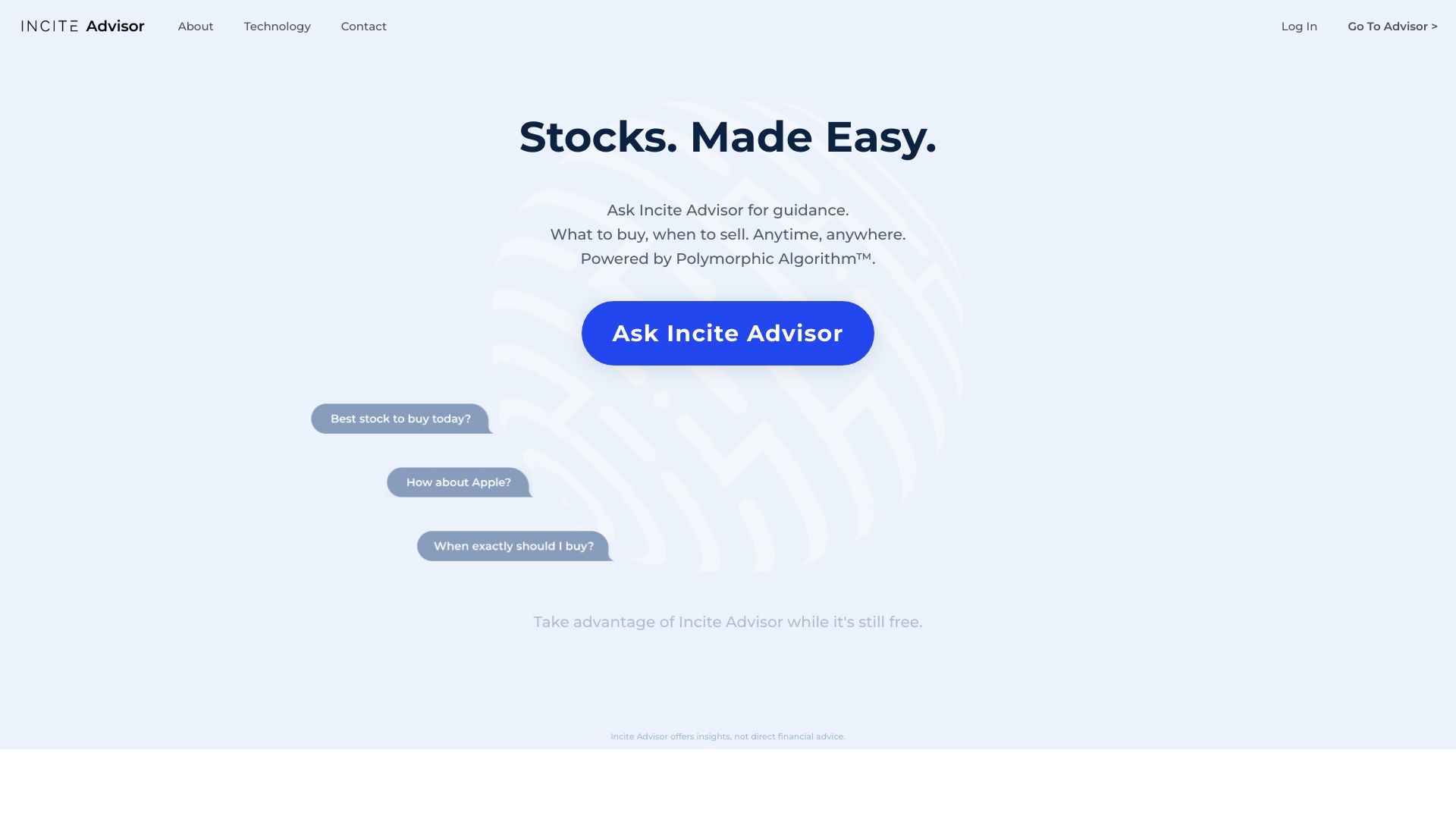20 Excellent Ways For Deciding On AI Stock Analysis Sites
20 Excellent Ways For Deciding On AI Stock Analysis Sites
Blog Article
Top 10 Tips When Looking At The Cost And Pricing For Ai Stock Predicting/Analyzing Platforms
It is important to assess the pricing and cost of AI trading platforms which predict or analyze the prices of stocks. This can help you keep out any costs that are not obvious. Pricing structures can vary greatly and it is important to know what you are getting for the money. Here are ten top tips to help you evaluate the price and value of these platforms.
1. Understanding Pricing Model
Subscription: Make sure you check if a platform charges fees per month or a year, and what's included in each level.
Pay-per-use: Check that the charges for the platform are based on usage for example, the number of trades (or request for data) or forecast.
Freemium Model: Examine to see if the platform offers a free version that offers only a few options. Premium features are paid for.
2. Compare Pricing Tiers
Find out what features are included in each price level.
Scalability: Ensure the pricing levels align with your requirements, whether you're an individual trader or a professional.
Upgrade flexibility: Find out whether you can effortlessly upgrade or downgrade when your requirements change.
3. Evaluate Hidden Costs
Data fees: Make sure to check for any additional fees for premium data (e.g. live data, or advanced analytics).
Brokerage charges - Check to see if any extra charges are imposed by the platform for execution of trades, or integration with brokers.
API usage: Evaluate if API access costs are higher or if API usage is frequent.
4. Assess Free Trials and Demos
Trial period: Check out platforms that give you a no-cost trial or demo to test their features.
Trial limitations: Decide if you can use all features included in the trial, or only one or a few.
Options with no commitment The user should be able to cancel your trial without incurring any charges if you find that the platform does not meet your requirements.
5. Check for discounts and promotional offers
Annual discounts: Find out whether the platform offers discounts on annual subscriptions when compared to the monthly plan.
Referral programs: Check if the platform provides discounts or credits for referring users.
Pricing for institutions: If you are a part of a company that is larger, ask about bulk pricing or institutional pricing.
6. How do you assess return on Investment (ROI).
Cost in relation to. value: Assess whether the features and forecasts of the platform are worth the price. Can it save you time or aid in making better choices in trading?
Track record of performance: Study the platform's success rate or user testimonials to gauge the potential return on investment.
Cost alternatives - Compare the platform's cost to the possible cost in the event that you do not use it (e.g., missed chance, analysis time manually).
Review Policies on Cancellation and Refunds
Conditions of cancellation: Make sure you are able to make a cancellation without hidden costs or penalties.
Refund Policy: Check if your platform permits you to receive the amount back if the subscriptions are not being utilized.
Auto-renewal. Check whether the platform will automatically renew your subscription. If it does you'll need to find out how to optout.
8. Pricing should be transparent
Clear pricing page: Make sure whether the website has a pricing page which is detailed, clear and does not contain any hidden fees.
Customer Support For clarification of unclear prices and costs, contact customer service.
Terms of service: Read the terms of service to understand any long-term commitments or penalties.
9. Compare yourself to your competition
Feature comparison Comparison of pricing and features of the platform with its rivals to make sure you're getting the best deal.
User reviews: Check out reviews from users on the platform to determine if it's worth the cost.
Market positioning: Determine the price of the product, whether it's a high-end, mid-range, or low-cost option and if it is in line with your expectations.
10. Consider the Long-Term Costs
Price increases: Find out whether and when the platform raises its prices.
Feature additions: Assess whether you have new features in your plan currently or need an upgrade.
Scalability Costs: Make sure the pricing of your platform is reasonable as your trading activity or demands for data grow.
Bonus Tips
Try multiple platforms. Compare the effectiveness and performance of various platforms by testing the platforms during trial periods for free.
Negotiate your pricing. If you're part of a larger institution or if you use the product in large quantities, ask about custom pricing.
There are free educational resources on some platforms.
Utilize these suggestions to determine the cost and pricing for AI analysis and stock prediction platforms. Choose one that meets your needs and falls with your budget. A platform priced well should strike a compromise between functionality, affordability and performance to maximize the value of your trading. Read the top rated AI stock trading bot free examples for site info including AI stock trading, ai investing, incite, ai trade, AI stock trading, market ai, ai investing app, AI stock picker, best ai trading app, ai trading tools and more.
Top 10 Tips For Assessing Regulatory Compliance Using Ai For Stock Predicting/Analyzing Trading Platforms
The regulatory compliance of trading platforms that use AI to forecast or analyze the price of stocks is a significant element. Compliance assures that a platform's operations are within the legal frameworks. The data of the users is secure and financial regulations are adhered to, which reduces any risk of legal issues. Here are the top 10 suggestions on how to evaluate the compliance of these platforms.
1. Verify the Licensing & Registration
The regulatory bodies: Make sure the platform has been licensed and registered with the appropriate financial regulatory bodies (e.g. SEC in U.S.A., FCA UK, ASIC Australia).
Verify the broker partnership If your platform has a partnership with brokers and brokers, make sure these brokers are licensed and regulated.
Public records: Visit the website of the regulator to check on the status of registration, as well as past violations.
2. Examine the privacy of your data Compliance
GDPR: If you are operating or providing services to users in the EU Make sure your platform is in compliance to the General Data Protection Regulation.
CCPA for Californians be sure to check the compliance of California Consumer Privacy Act.
Policies on handling data: Check the privacy policies of the platform to see how it describes data collection, storage, and sharing.
3. Examining anti-money laundering measures
AML Policies: The platform should have solid AML (Anti-Money Laundering) policies to detect money laundering and prevent it from happening.
KYC procedures: Check whether the platform supports Know Your Customer (KYC) which validates user identities.
Monitor transactions: Determine if the platform monitors transactions for suspicious activity and if it reports it to authorities in charge.
4. Make sure you are in compliance with Trading Regulations
Market manipulation: Make sure that the platform contains measures to prevent market manipulation, such as fake trading, wash trading.
Order types: Ensure that the platform adheres to rules regarding order types.
Best execution: Check to see if the platform follows the best execution practices, which ensures that trades are executed at the cheapest price.
5. Cybersecurity compliance assessment
Data encryption: Ensure that the platform is secure for users' data in transit and when it is in rest with encryption.
Response to incidents: Verify if the platform has a clear incident response strategy for cyberattacks or data breaches.
Verify any certifications.
6. Transparency & Disclosure:
Fee disclosure - Ensure that all fees are disclosed, even hidden or additional charges.
Risk disclosure: Make sure the platform provides clear risks and disclosures. This is especially important for trading strategies with high leverage or risk.
Performance reporting: Determine whether the platform offers clear and accurate reports on performance on its AI models.
7. Check for Compliance With International Regulations
Trading across borders When you trade internationally, ensure that the platform you use is in compliance to all laws and regulations.
Tax reporting - Check if a platform provides tools and reports that will aid users in complying with tax regulations.
Security: Make sure that the platform complies with international sanctions and doesn't allow trading with countries or entities that are banned.
8. Review Audit Trails and Record-Keeping
Transaction records: Ensure the platform has accurate records of all transactions to be used for audits and regulatory purposes.
Logs of activity for users (logs) You can check to determine if the platform is tracking the activities of users, such as logins and trades. Also, verify if account settings are changed.
Check for audit readiness: Determine if your platform can provide the required documentation and logs in the case of an inspection from a regulatory authority.
9. Evaluation of Compliance with AI Specific Regulations
Algorithmic Trading Rules If your platform allows algorithmic trades, make sure it complies with regulations like MiFID II (in Europe) or Reg SCI (in the U.S.).
Fairness and Integrity: Determine whether the platform's AI models are monitored and adjusted to ensure that they are not biased.
Explainability: As required by certain regulations, the platform should provide clear explanations of AI-driven decisions and predictions.
10. Review User Commentaries and Regulatory Historical History
User reviews: Read reviews from users to assess the reputation of the platform's regulator conformity.
The history of regulatory compliance - determine if the website is associated with any prior regulatory violations or fines.
Third-party audits: Determine whether the platform is subject to regular third-party audits to ensure compliance with regulations.
Bonus Tips
Legal consultation: Discuss with an expert in law on the conformity of the platform to applicable laws.
Trial period: Try the platform for free, or try the demo to test the compliance features and documentation.
Customer Support: Make sure that the platform offers customer support for any questions or issues related to compliance.
The following tips can assist you evaluate the regulatory compliance for AI trading platforms that predict and analyze stocks. You can select a platform that is in compliance with the legal frameworks and safeguards your rights. Compliance does not just help reduce legal risks, but also increases confidence with the platform. Read the top rated source about best ai for stock trading for blog info including AI stock price prediction, ai for trading stocks, ai options trading, ai options trading, free ai tool for stock market india, trading ai tool, ai copyright signals, ai copyright signals, how to use ai for stock trading, invest ai and more.